Podcast Episode 636: Attic Insulation, Slab Additions, and Code-Compliant Decks
Listeners write in about wonky doors and hacking water heaters and ask questions about insulating a four square’s attic, adding on to an existing foundation, and deck construction.

Follow the Fine Homebuilding Podcast on your favorite app. Subscribe now and don’t miss an episode:
Note: The Fine Homebuilding Podcast team is always looking for ways to improve, so we’re switching up our video strategy. But don’t worry — you’ll still be able to watch all your favorite clips from the show. Check out our YouTube channel or keep scrolling to see more!
 |
Brian has a wonky door update. Neil shares a story on network-enabled appliances. Jen is insulating her home’s attic. Dominic wonders if a frost-protected slab is right for his addition. Ronny asks if his neighbor’s new deck is up to snuff.
Check In:
Mike’s Insulating:
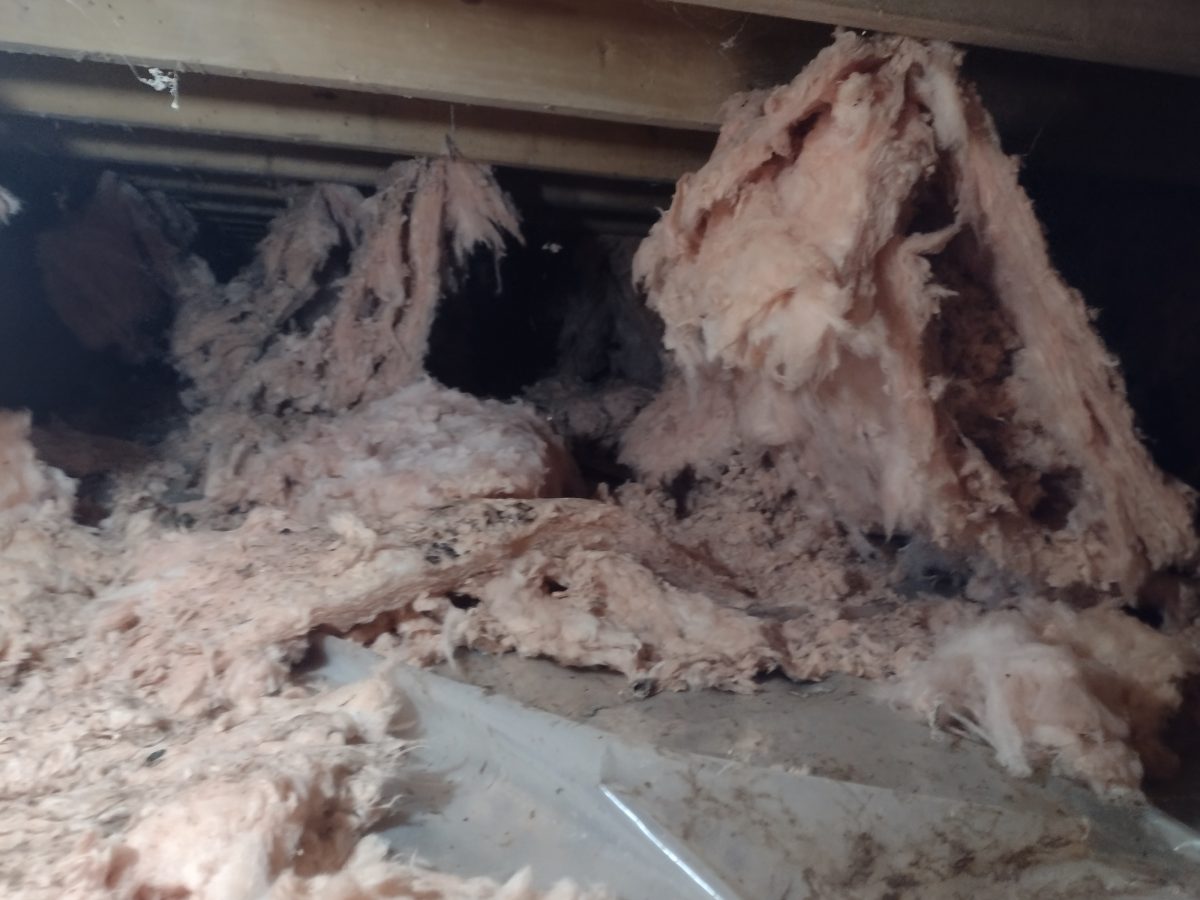 |
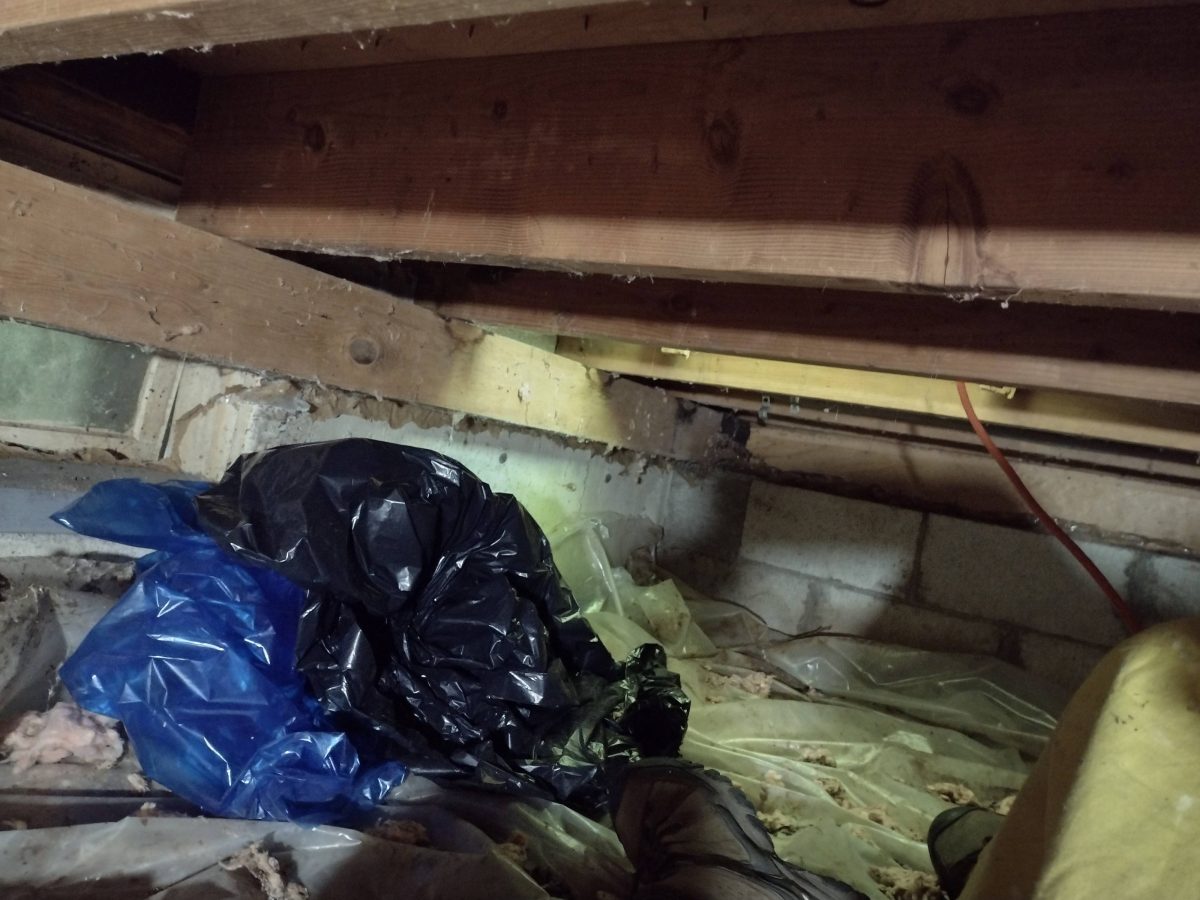 |
Brian’s wildland urban interface photo shoot:
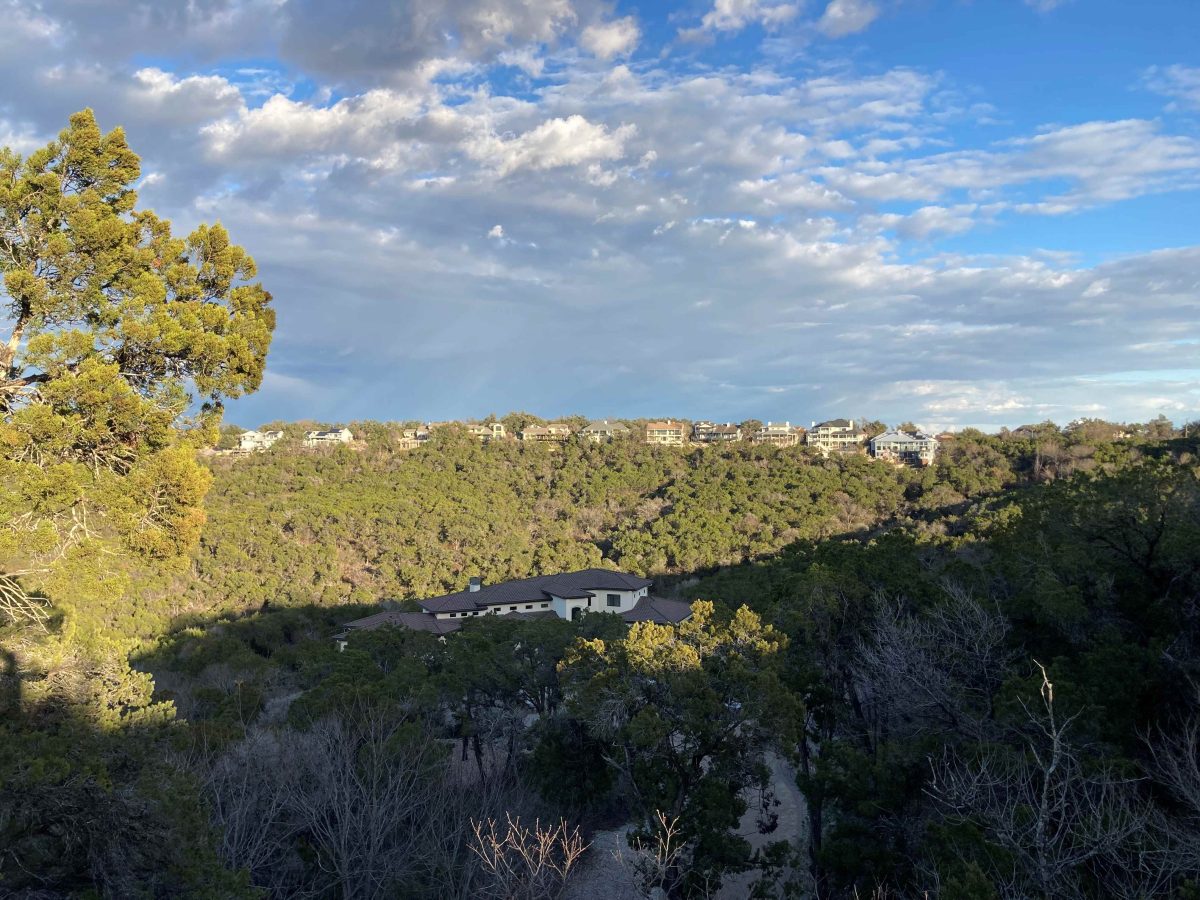
Patrick’s photo shoot and Spark events:
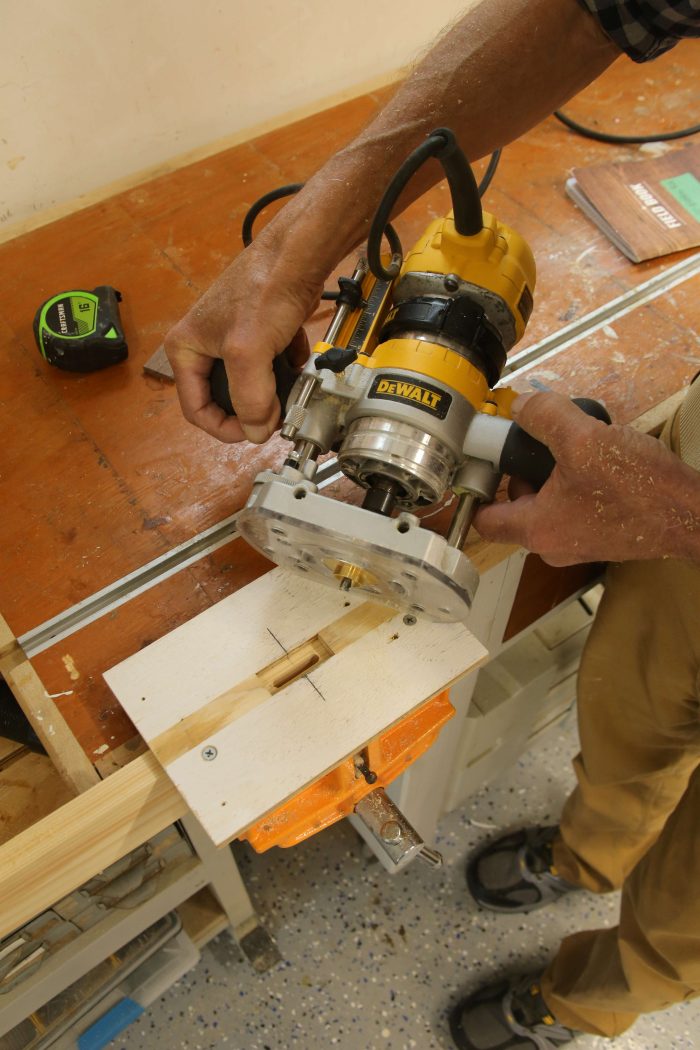 October 26, 2024 |
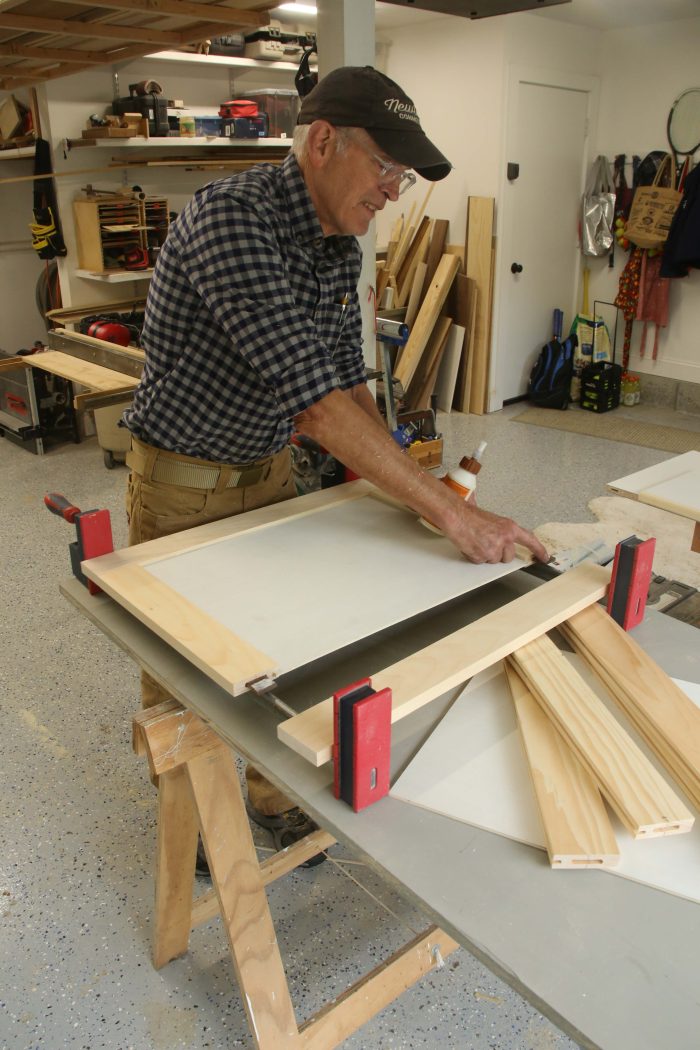 October 12, 2024 |
Listener Feedback 1:
Brian writes:
Thank you for responding on the podcast to my wonky door question in episode #632! My wife and I bought this old farmhouse and it’s her dream house. 1 acre lot and we have done a lot of work to this house! The door is only a problem as it doesn’t quite latch correctly. It’s a bedroom door to a back hallway.
There’s so much in this house we love. Gingerbread trim details on the main stairs. It was a duplex when we bought it and we undid that before we moved in. I’ll send some more details. I’ll send you a video too!
More to come. Been a listener from episode 1 and really only listen while I’m working on my old houses. I do have a theory that my door jamb issue could be related to a bathroom remodel that happened many years before we bought this house and I think someone may have done some extreme hacking running a drain line, but I haven’t examined floor joists yet.
Also, yes, I am an engineer. I live for the details!
Brian Oneonta, NY
RELATED STORIES
Listener Feedback 2:
Neil writes:
I though the Podcast would find this interesting:
Hacked Water Heaters by Kevin Purdy via ArsTechnica.com
“The hot water took too long to come out of the tap. That is what I was trying to solve. I did not intend to discover that, for a while there, water heaters like mine may have been open to anybody. That, with some API tinkering and an email address, a bad actor could possibly set its temperature or make it run constantly.
I now had an app that could start recirculation. Being a home automation nerd, and thereby a Home Assistant enthusiast, I searched for a better way. I found an unofficial Rinnai component and installed it, and then I had real control. I could set recirculation to run on whatever schedule I wanted.
If everything worked great, why am I still writing? Because I contacted the coders behind that integration, thinking I might write up my fun little hotter-water-quicker adventure. Maybe I’d learn more about what motivates the folks doing this useful work for free. This added a surprising second and surreal third part to my one-act play.
I emailed and spoke by phone with integration author Brad Barbour, who, like me, wanted to make his Rinnai-brand tankless water heater better. Barbour lives where freezing temperatures are uncommon, and wanted to automatically keep hot water circulating every so often whenever the temperature dropped into pipe-freezing range.
The first version of Rinnai’s official app, “Control-R,” “left a big gap” in function and convenience, Barbour said. Only one account could be signed in and you could only set up timed schedules, not automate. Barbour, wanting to craft his own solution, started watching the app’s network traffic to see if he could do better. He and Daniel Dulitz, a GitHub observed that you could control any connected Rinnai water heater with the account’s email address.
The two prepared a security advisory for Rinnai, noting, “Knowing only your email address, I can set your water heater’s temperature to very cold or scaldingly hot. I can put it into recirculation mode continuously so that it uses lots of gas… I can see your home street address that you have entered into the Control-R app when you registered your water heater,”
Reporter Kevin Purdy wrote to Rinnai
“After trading a few emails with a PR firm that works with Rinnai, I heard back from a representative, who said that the Rinnai firm “would like to pass on the interview opportunity to be included in your article” (I did not request or offer an interview). Rinnai did, however, “appreciate that you are a new homeowner and current customer.”
So answers to my questions were provided, but they were “written from a customer service perspective for your personal knowledge.” only Kevin Purdy, water heater owner, had access to provided text, not Kevin Purdy, journalist.
Mark Ostrowski, head of engineering at Check Point Software, noted that appliance vendors, working with open source operating systems, can design, build, and ship devices that have vulnerabilities by the time they arrive in a customer’s home. Patching and updating those systems is often difficult, and typically left to the customer to initiate.”
Home technology expert Mike Bennett replies:
This is one of those things that is scary and unfortunately, there isn’t all that much that can be done on the consumer side besides reading reviews and trusting the more well known manufacturers. I am certainly glad that there are people out there who are not only paying attention, but actively looking for vulnerabilities in todays tech. Unfortunately, vetting an app or IoT (Internet Of Things, or smart home) device is much more involved than simply reading reviews online.
If this is the first time the manufacturer has offered a “connected” device, I would likely hold off or do some further investigating on the device. Often times, a water heater manufacturer for example, isn’t going to be making its own WiFi chipset, or even writing its own software for it, so sometimes the manufacturer may represent who they have partnered with for this integration, and in that case, you can read reviews of the company who is helping with the software.
Read online and app store reviews.
Look for integration with other platforms. If the device is claiming to be compatible with Apple HomeKit, Samsung SmartThings,or Google Home, etc., then there is some level of standards that they have had to build into their software. When the manufacturer does not offer any of those integrations, it may be telling that they are not putting much money/effort into their software, which would make me a bit skeptical.
Lastly, I would make sure we all are using our common sense. Do not use the same password on your IoT app as you do for your banking. Ideally every password you have should be different but I am human as well so I know that is seemingly impossible. If you do see any security advisories, or if you ever have some sort of issue with unintended operation of your device, then disconnect it. The easiest way to disconnect it is to either unplug the ethernet connection (if it has one), or to change your wifi name and password, as the device will no longer be able to connect to the network unless you go back through the setup process.
RELATED STORIES
Listener Feedback 3:
Dyami writes:
Good morning. I hope you’re well. On a podcast from a few months ago which I recently listened to, you mentioned that exterior compressors associated with heat pumps are unattractive.
I challenge you to not appreciate the beauty of mine. Without someone might actually notice that I’ve needed siding for almost a year. 😉
Dyami Plotke
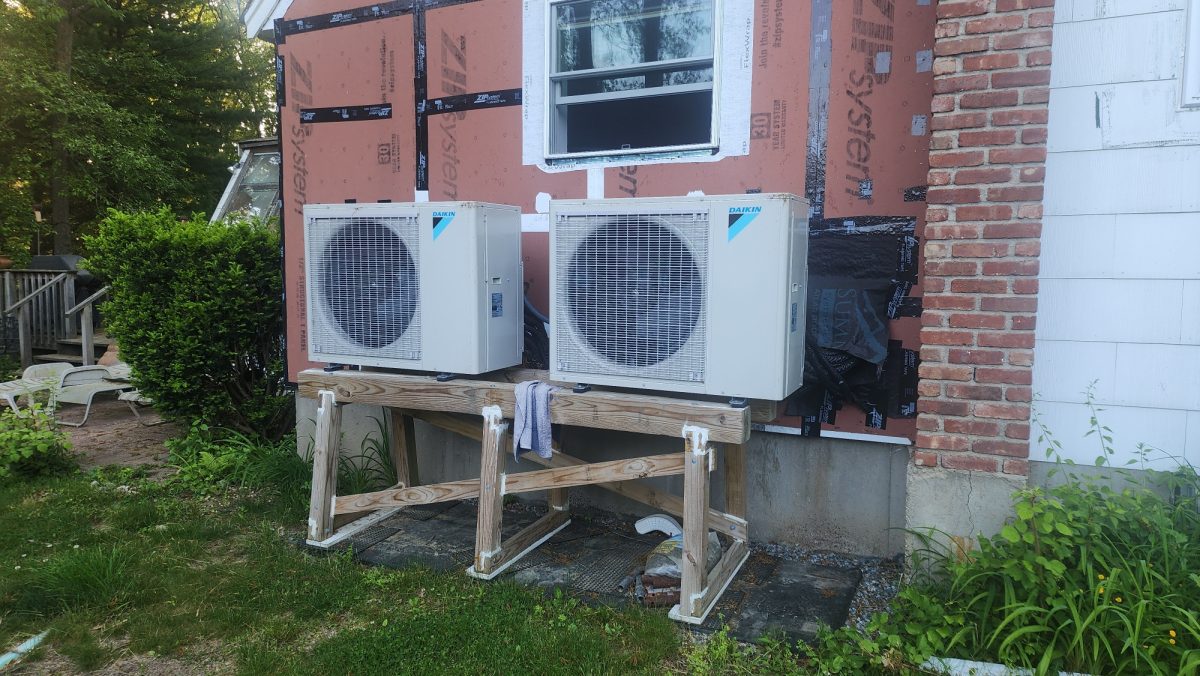
RELATED STORIES
- How Efficient Are Heat Pumps, Really?
- Heat Pumps and Cold-Climate Applications: Designing for Comfort and Resiliency
Question 1: How should I insulate a new attic living space?
Jen writes:
Hello!
I’ve been enjoyed listening to your podcast since I’ve become a homeowner. My husband and I purchased a 100 year old home with a hip-style roof and it’s incredibly well built. We love the attic area and I am planning to renovate it myself to make it into living space. I find myself really struggling over the insulation part of it. There’s so much to choose from and it already has a difficult time breathing.
There are two vented skylights in the attic which are incredibly helpful for venting, and the floor of the attic is wood and the thermal ceiling of the home which also makes me concerned for over insulating the ceiling of the attic. I am considering rigid insulation, and its ability to be thin which allows us to have the maximum ceiling height. I’m hesitant use the spray foam because of its cost and I also just love the roof construction itself and I think it’s worth preserving. The floor is all walkable and beautiful 100 year old wood that I’m looking forward to refinishing; it is not blown in insulation but it is a completely different climate from the rest of the house. We live in CT so we have all types of weather and I also plan to install a mini split to help with the climate control of the attic when we are up there in all its finished glory.
I’m looking for advice/suggestions on what type of insulation I should investigate in order to make our attic livable space.
All the Best, Jen
Attached are images, I will send other daylight photos of the outside tomorrow. I do love the architecture but I do not think that I will be able to incorporate insulation and the original structure in the design because of how it is laid out. I’m concerned that if spray foam is used, it will never go away and future renovations will be difficult to scrape away once its ability to insulate has worn down. I was thinking if I decided to use a rigid insulation that I would add 2×6 pieces between the beams so that I would have more areas to screw into. Another possibility is fiberglass insulation and staple to the beams as well. I know there are rafter baffles to help with airflow but I don’t have vents in the roof that help the roof breathe, so I feel it wouldn’t work.
I’m also thinking about New England humidity and I am concerned that regardless of what I put in, it will cause a moisture build up and mold. The skylights and windows help a lot with ventilation, but not humidity. The house does not have air conditioning but I’d like to pull up some additional electrical so that I could add a mini split in the attic for climate control when we occupy the space which would definitely help with humidity.
Jen from CT
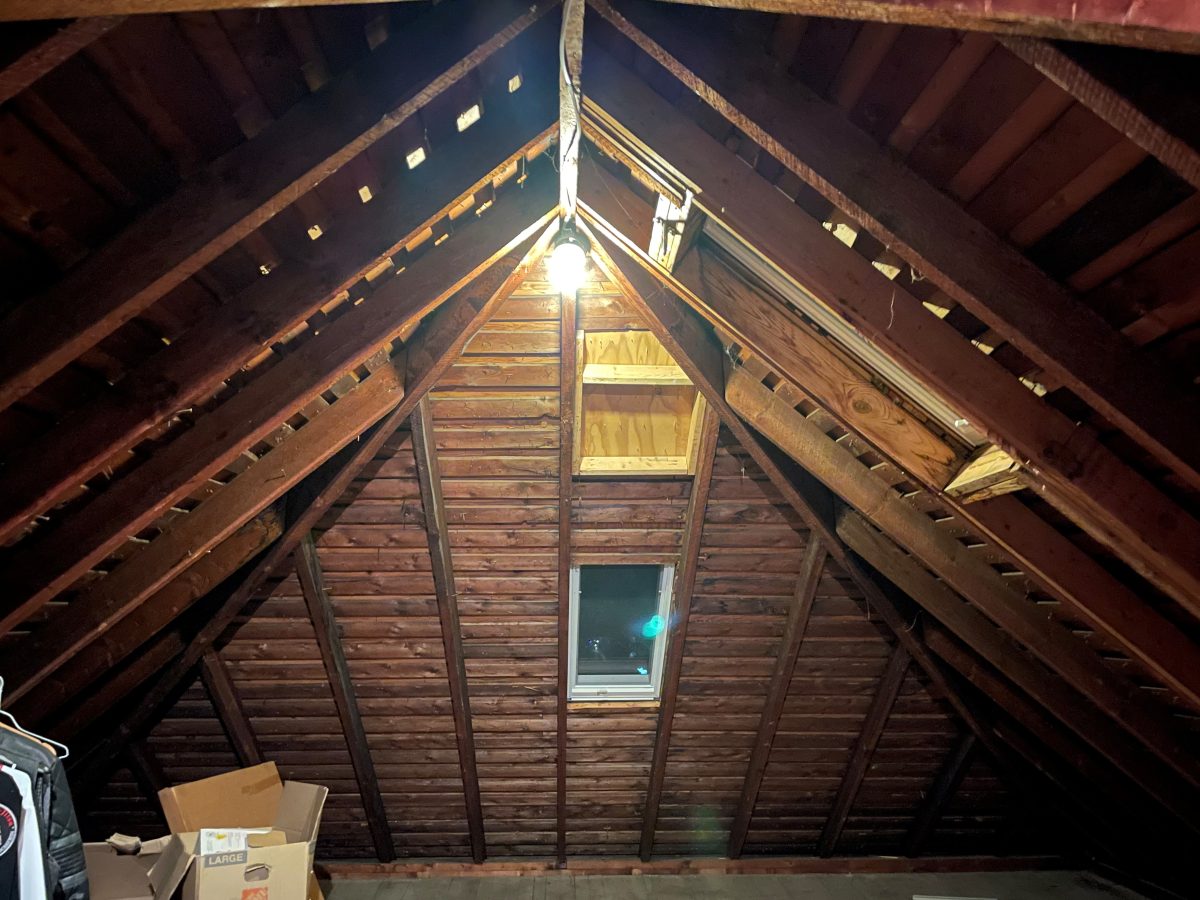 |
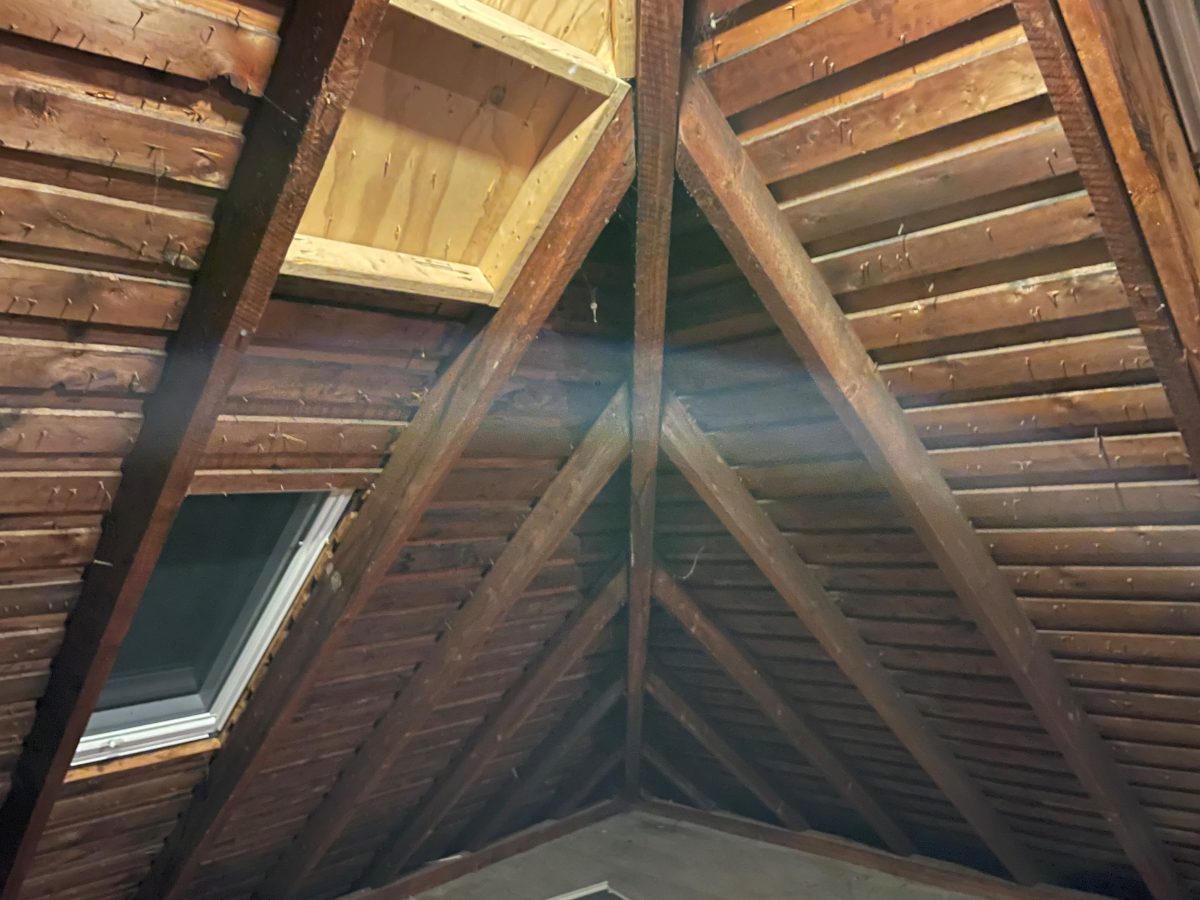 |
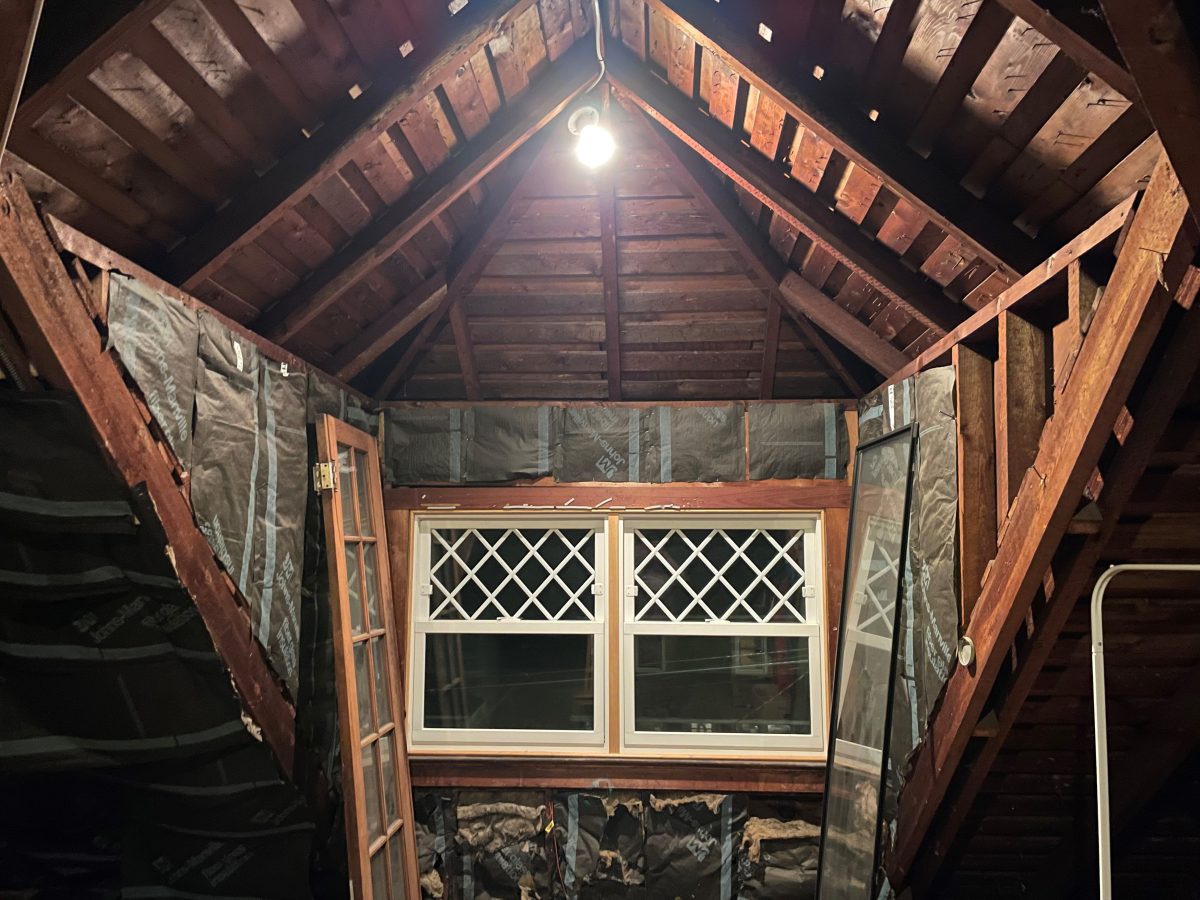 |
RELATED STORIES
Question 2: Can I add on using frost-protected shallow foundation?
Dominic writes
Hello Fine Homebuilding podcast,
I started listening to the podcast a few months ago and it has become a staple during my commute to work. I really enjoy the combination of technical talk and humor and have now subscribed to the magazine. It’s great to have the paper copy to read.
I have a question about Frost Protected Shallow Foundations. I’m adding a 24′ x 17.5′ 2-story addition on my house in Massachusetts. I was looking through code and came across this technique and am considering using it for my addition. It seems like a great option for my site (The site is flat, and I don’t want to expand my basement) and the cost savings seem real although I haven’t gotten any quotes.
I’ve chatted to several people about these foundations and had very mixed feedback. Some people say they are fine, and others seem super skeptical – like a foundation is a place I really shouldn’t try to save money.
Is this structurally or in any other way a lesser foundation than a slab with footings below frost? What would happen if I ever winterized my house – since code requires the building to be at 64 degrees? I get the use cases for a slab with footings, like on a sloped site, but in my case it seems like a great option.
I’d really appreciate your thoughts!
Thanks!
Dominic from Massachusetts
RELATED STORIES
- Tying in to a FPSF
- Slab foundation for cold climates
- Protecting Foundations from Frost
- Revised Builder’s Guide to Frost Protected Shallow Foundations
Question 3: Does a passing building inspection mean a deck is safe?
Ronny writes
Hi Mike, I’m hoping you can offer some suggestions on a problem I’m helping a neighbor with.
She recently had a new deck added to the back of her house and from what I can tell numerous things were done incorrectly according to the International Residential Code (we follow the 2018). When I pointed out several of the deficiencies to the builder he said “it passed inspection therefore it meets code.” He also said he’s been building decks this way for years and never had a problem. Below is a list of the things I pointed out that don’t look right but first the main question I have: What can my friend do at this point to get the builder to fix the mistakes – the things that don’t meet the code?
Here are the things I think don’t meet code.
- The bottom of the stair stringers are nailed to a 2×12 that sits on the dirt with no footing or landing.
- There are no riser boards leaving an opening between treads of about 6 inches.
- The bottom step is 4 in. off the lawn and all the others are 7 and 1/2 inches.
- The ledger board is installed over the Cedar Impressions vinyl shingle siding with no flashing.
- The ledger has one ledger screw in the middle between each pair of joist and the joists are 14 feet out to the beam.
- The ledger is cut around dryer exhaust pipe between two joists and there are no ledger screws there.
- The joist hangers are nailed on with roofing nails.
- The end joists are overlapping and nailed to the ends of the ledger with no joist hangers.
- The rail posts are notched 1 and 1/2 inches around the band joist along the front and held on with two ledger screws. The band joist is just nailed on to the ends of the joists and it twists when you push on the railing.
- The posts holding up the beam are just sitting on top of the footing without any connector. And the top of the posts are toe nailed or toe screwed to the beam.
My friend didn’t think anything was improperly done and invited me over to have a look. I’m a regular DIYer and the Fine Homebuilding website and your videos have helped me through several home projects over the years. Though I have only built one deck these deficiencies on my friend’s deck seemed obvious but I wonder how many things I’m missing that could also be wrong.
Let me know what you think. Thank you very much.
Ronny – SW Michigan
RELATED STORIES
Well, unfortunately that is all the time we have for today. Thanks to Mike, Brian, and Andres for joining me and thanks to all of you for listening. Remember to send your questions and suggestions to fhbpodcast@finehomebuilding.com, and please like, comment, or review us no matter how you’re listening–it helps other folks find our podcast.
Happy Building!
Fine Homebuilding Recommended Products
Fine Homebuilding receives a commission for items purchased through links on this site, including Amazon Associates and other affiliate advertising programs.

Affordable IR Camera

Reliable Crimp Connectors

Handy Heat Gun



























View Comments
Are the videos of the podcast no longer being posted to you tube?
John